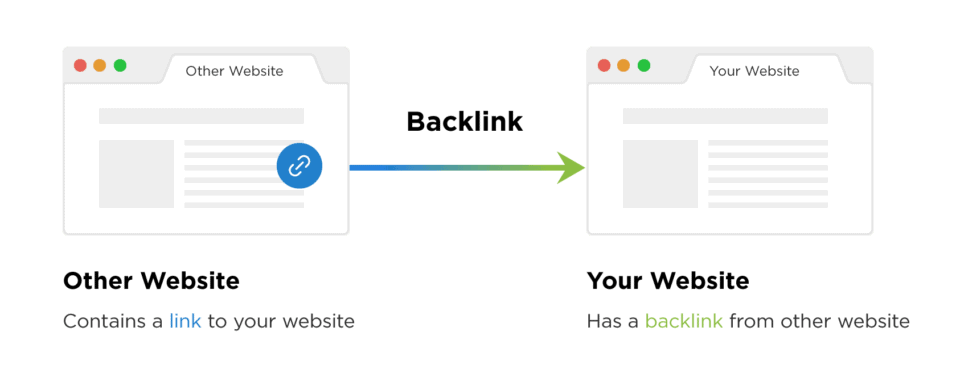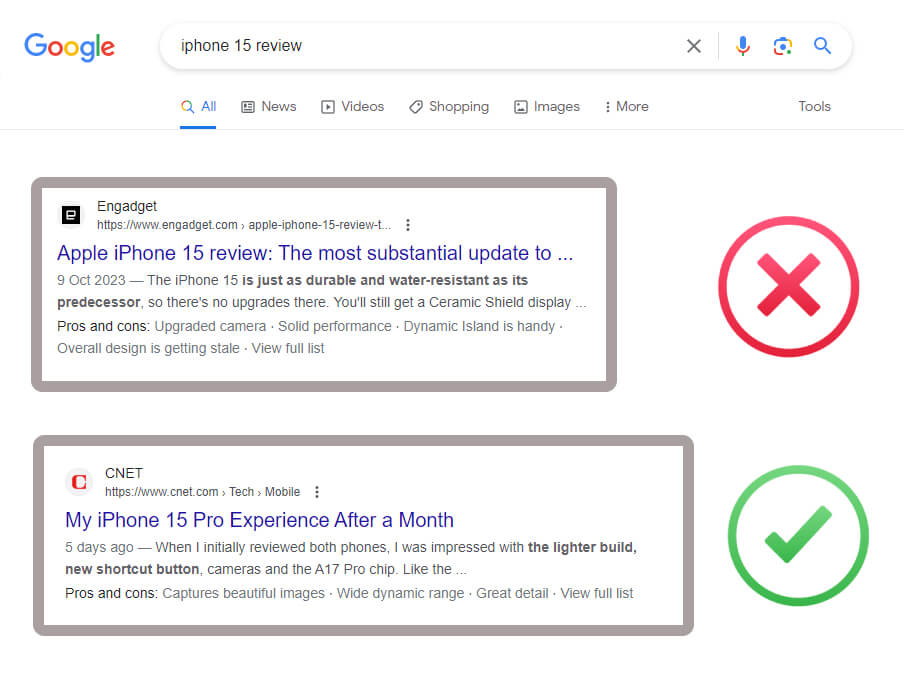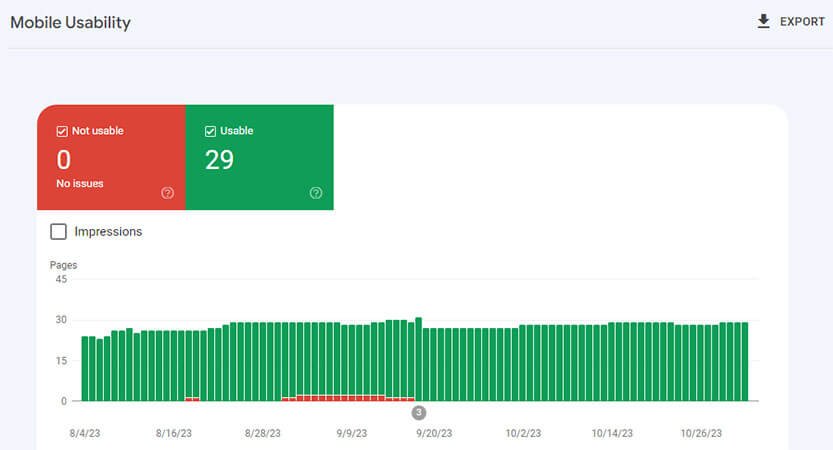There are over 200 Google ranking factors to assess the relevance of your website content in response to online searches. Google, as the dominant search engine globally, surpasses competitors like Bing and Yahoo, processing more than 8.5 billion daily searches. In fact, over 90% of all online searches are conducted through Google.
Elevating your website’s position in Google search results can yield substantial benefits for your business. Yet, given the multitude of factors at play, it’s crucial to identify the most significant Google ranking elements that warrant your attention.
This article will delve into 6 pivotal Google ranking factors that can undeniably enhance your website’s search engine rankings. If you haven’t addressed these aspects, it’s advisable to take action promptly. Let’s explore these factors in-depth.
Table of Contents
1. Backlinks

Backlinks, often referred to as inbound links or incoming links, are a fundamental element among Google’s ranking factors. These are hyperlinks from external websites that point to your own site. Google considers backlinks as a vote of confidence in your content.
The quality and quantity of these backlinks play a significant role in determining your website’s ranking in search results. Acquiring high-quality backlinks from authoritative and relevant websites can positively impact your site’s visibility in Google’s search rankings. It’s essential to focus on building a strong and diverse backlink profile to improve your website’s search engine performance.
There are a number of factors that Google considers when evaluating the quality of a backlink, including:
- The authority of the linking website: Websites with higher authority tend to have more valuable backlinks.
- The relevance of the linking website: Backlinks from websites that are relevant to your own are more valuable than backlinks from irrelevant websites.
- The anchor text: The anchor text is the text that is linked to your website. Google considers the anchor text when determining what the linking website is about and what your website is about.
- The placement of the link: Links that are placed prominently on a website are more valuable than links that are buried deep in the content.
If you’re seeking high-quality backlinks, consider these suggestions:
- Create high-quality content that is informative and engaging. This will make other websites want to link to your content.
- Reach out to other websites and ask for backlinks. Ensure that your outreach efforts are personalized, and provide a compelling explanation of why your content would offer value to their specific audience.
- Share your content across social media and various online platforms to increase its visibility.. This will help to increase the visibility of your content and attract more backlinks.
It’s crucial to emphasize that backlinks should be acquired organically, without artificial manipulation. Google can penalize websites that engage in link building schemes, such as buying backlinks or exchanging links with other websites.
Here are some examples of good and bad backlinks:
Good backlinks:
- A link from a high-quality website that is relevant to your own.
- A link from a website that has a good reputation in your industry.
- A link from a website that is well-respected by other websites.
Bad backlinks:
- A link from a website with a low Domain Authority.
- A link from a website that is irrelevant to your own.
- A link from a website that is known for spam or other negative practices.
If you are unsure whether or not a backlink is good or bad, you can use a backlink analysis tool such as SEMrush or Neilpatel to get more information.
2. Content Relevance With User Query

Relevance is one of the most important Google ranking factors. It refers to how well a website’s content matches the search query of a user. Google wants to provide users with the most relevant results possible, so it rewards websites with content that is highly relevant to the search query.
Google uses a variety of factors to assess the relevance of a website’s content, including:
- Keywords: Google looks at the keywords that are used in the title, meta tags, and content of a website to determine what the website is about. It also considers the context of the search query, such as the location of the user and the type of device they are using.
- Topic modeling: Google uses topic modeling to understand the meaning of the content on a website. This allows Google to match websites with search queries that are semantically similar, even if the keywords are not exactly the same.
- Entity matching: Google uses entity matching to identify the entities that are mentioned in a website’s content and in the search query. This allows Google to match websites with search queries that are related to the same entities.
Google also considers the following factors when assessing the relevance of a website’s content:
- User engagement: Google looks at how users interact with a website, such as how long they stay on the website and how often they click on links. This information helps Google to understand whether or not users find the website’s content to be relevant and informative.
- Expertise: Google considers the expertise of the author of the content on a website. This is based on factors such as the author’s reputation, their education, and their experience in the field.
- Trustworthiness: Google considers the trustworthiness of the website. This is based on factors such as the website’s reputation, the quality of its content, and its privacy policy.
Example of How Google Uses Relevance to Rank Websites:

Search query: “How to make a cake”
Website 1:
- Title: “How to Make a Cake: A Step-by-Step Guide”
- Meta description: “This step-by-step guide will teach you how to make a delicious and moist cake.”
- Content: The content of the website is a comprehensive guide on how to make a cake. It includes instructions on how to measure and mix the ingredients, bake the cake, and frost it.
Website 2:
- Title: “10 Easy Cake Recipes for Beginners”
- Meta description: “Looking for some easy cake recipes? Look no further! Here are 10 easy cake recipes that even beginners can make.”
- Content: The content of the website is a list of 10 easy cake recipes. Each recipe includes a list of ingredients, instructions, and a photo of the finished cake.
Google would likely rank Website 1 higher in search results because it is more relevant to the search query. The title, meta description, and content of Website 1 all focus on the topic of making a cake, while the title, meta description, and content of Website 2 are more general. Additionally, Website 1 provides more in-depth information on how to make a cake, while Website 2 simply provides a list of recipes.
Also Read: Content Marketing Strategy 101: A Beginner’s Blueprint for Success
3. Freshness of Content

Freshness is a measure of how recent and up-to-date a website’s content is. Google considers freshness as a ranking factor because it wants to provide users with the most relevant and up-to-date information possible.
Google uses a variety of signals to determine the freshness of a website’s content, including:
- Publication date: Google looks at the publication date of a website’s content to determine how recent it is.
- Last modified date: Google looks at the last modified date of a website’s content to determine how recently it has been updated.
- Citations: Google looks at the number of citations that a website’s content has received. Citations are links from other websites to the website in question. The more citations a website’s content has received, the fresher Google is likely to consider it.
- User engagement: Google looks at how users interact with a website’s content. For example, Google looks at how long users stay on the website and how often they click on links. This information helps Google to understand whether or not users find the website’s content to be fresh and relevant.
Website owners can improve the freshness of their content by following these tips:
- Publish new content on a regular basis. This will show Google that your website is active and that you are committed to providing users with the latest information.
- Update your existing content on a regular basis. This will help to ensure that your content is always accurate and up-to-date.
- Encourage other websites to cite your content. This will help to increase the number of citations that your content has received, which will make it seem fresher to Google.
Example of How Google Might Use Freshness to Rank Websites:

Search query: “current events”
Website 1:
- Title: “Headline News: The Latest Top Stories from Around the World”
- Meta description: “Get the latest headlines and top stories from around the world, updated throughout the day.”
- Content: The content of the website is a list of the latest news headlines and top stories from around the world. The articles are all dated and time-stamped.
Website 2:
- Title: “Current Events: What’s Happening in the World Today?”
- Meta description: “This website provides news and information on current events from around the world.”
- Content: The content of the website is a list of current events from around the world. However, the articles are not dated or time-stamped.
Google would likely rank Website 1 higher in search results because its content is more fresh. The articles on Website 1 are all dated and time-stamped, which shows that they are recent. The articles on Website 2 are not dated or time-stamped, so it is difficult to tell how recent they are.
4. Mobile-Friendliness

Mobile-friendliness is a measure of how well a website is designed to be viewed and used on mobile devices such as smartphones and tablets. Google considers mobile-friendliness as a ranking factor because it wants to provide users with the best possible experience, regardless of the device they are using.
Why is Mobile-Friendliness Important for Google ranking?
- The use of mobile devices for internet access is on the rise. In 2022, over half of all web traffic worldwide came from mobile devices.
- Google aims to ensure users receive the optimal experience. This means making sure that websites are easy to view and use on mobile devices.
- Google has been prioritizing mobile-friendliness in its ranking algorithm since 2015. This means that websites that are not mobile-friendly are likely to rank lower in search results.
How to Make your Website Mobile-Friendly
As one of the Google ranking factors, there are a number of things you can do to make your website mobile-friendly, including:
- Use a responsive design. A responsive design will automatically adjust the layout of your website to fit the screen size of the device it is being viewed on.
- Ensure that your text is of sufficient size to be easily readable. Text that is too small can be difficult to read on mobile devices.
- Use large tap targets. Links and buttons should be large enough to easily tap on with a finger.
- Avoid using pop-ups. Pop-ups can be disruptive and difficult to close on mobile devices.
- Test your website on different mobile devices. Make sure your website looks good and functions well on a variety of mobile devices.
5. HTTPS

HTTPS, which stands for Hypertext Transfer Protocol Secure, is a critical factor in Google’s ranking algorithm. Websites that use HTTPS are considered more secure and trustworthy, leading to better search engine rankings. Here’s a more detailed explanation of how HTTPS impacts Google ranking:
Why is HTTPS Important for Google Ranking?
- HTTPS is more secure than HTTP. HTTPS encrypts data in transit, which makes it more difficult for hackers to steal data.
- Google wants to provide users with a safe and secure browsing experience. This means ranking websites that use HTTPS higher in search results.
- Google has been prioritizing HTTPS in its ranking algorithm since 2014. This means that websites that use HTTPS are likely to rank higher in search results.
How to Make your Website HTTPS-Enabled
To make your website HTTPS-enabled, you need to obtain an SSL certificate from a certificate authority (CA). Once you have an SSL certificate, you need to install it on your web server. Once your website is HTTPS-enabled, you will see a green lock icon in the address bar of your browser.
6. Page Speed

Another Google ranking factors is page speed, or the loading speed of a web page, is a critical factor in Google’s ranking algorithm. Google recognizes the importance of providing users with a fast and responsive browsing experience, and as a result, it considers page speed as a ranking factor. Here’s a more detailed explanation of how page speed influences Google rankings:
Why is Page Speed Important for Google Ranking?
- Users expect websites to load quickly. In a study by Google, 53% of users abandon a website if it takes more than three seconds to load.
- Google wants to provide users with a fast and responsive browsing experience. This means ranking websites with faster page speeds higher in search results.
- Google has been prioritizing page speed in its ranking algorithm since 2010. This means that websites with faster page speeds are likely to rank higher in search results.
4 Tips to Improve your Website’s Page Speed
There are a number of things you can do to improve your website’s page speed, including:
- Optimize your images. Images are often the slowest loading elements on a web page. You can optimize your images by compressing them and using the right file format.
- Minify your CSS and JavaScript files. Minifying CSS and JavaScript files removes unnecessary whitespace and comments, which can make them load faster.
- Use a content delivery network (CDN). A CDN is a network of servers that deliver your website’s content from the server that is closest to the user. This can improve page speed for users all over the world.
- Use a caching plugin. A caching plugin stores copies of your website’s pages on the user’s browser. This can improve page speed for subsequent visits to your website.
Conclusion
In conclusion, understanding and optimizing for the most influential Google ranking factors is essential for achieving success in the digital landscape. Backlinks, as a vital element, reflect the endorsement of your content, highlighting the significance of high-quality and relevant inbound links.
Relevance, another critical factor, hinges on aligning your content with user intent, emphasizing the importance of thorough keyword research and creating informative, contextually rich content. Freshness ensures that your content remains up-to-date and competitive, catering to the evolving needs of users.
Other important Google ranking factors such as Mobile-friendliness, HTTPS, and page speed address the user experience aspect, promoting a secure, fast, and mobile-responsive environment. By comprehending and leveraging these ranking factors, you can bolster your website’s visibility and ultimately find your place at the top of Google’s search results, attracting the right audience and achieving your digital goals.
Stay attuned to these key factors, adapt your strategies, and watch your website rise to prominence in the highly competitive world of online search. For businesses seeking expert guidance in optimizing their website’s Google ranking factors, partnering with a reputable digital marketing agency in Singapore can provide invaluable insights and assistance in maximizing their online visibility and search engine performance.



